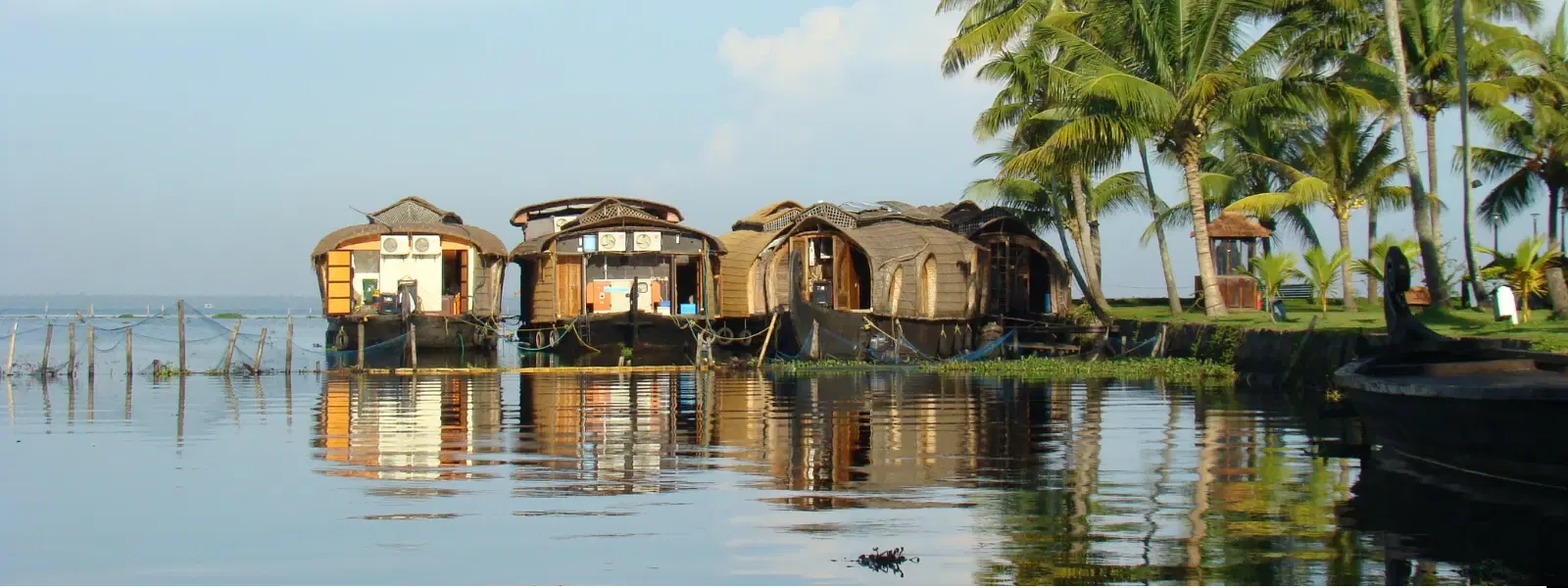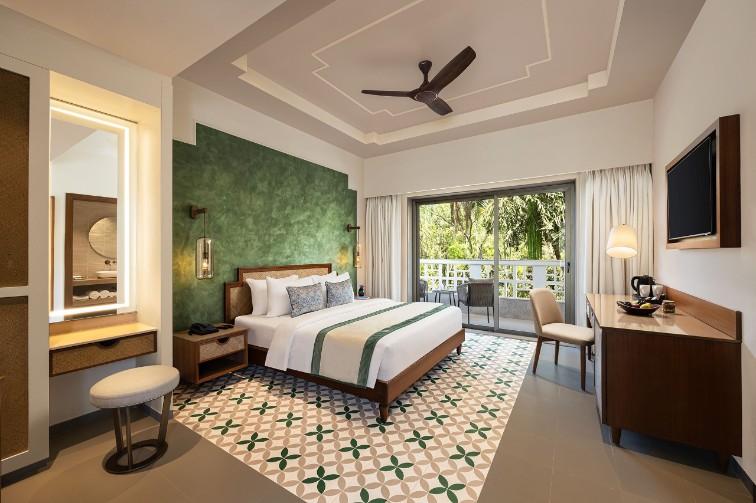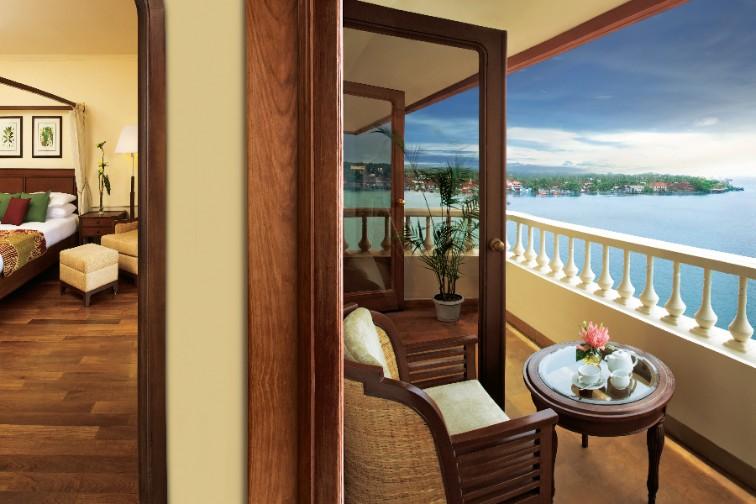
Hotels
•05 min read

Imagine drifting on a houseboat along serene backwaters, surrounded by lush greenery and the tranquil calls of birds. Kumarakom, with its picturesque landscapes and vibrant ecosystems, invites travelers to experience nature’s calm and mystery. Knowing the best time to visit Kumarakom can enhance your experience, ensuring you enjoy the right weather conditions, engaging activities, and perfect accommodations according to the season.
This guide is designed to help you identify the best time to visit Kumarakom. Here, you'll learn about its distinct seasonal features, local attractions, and handy travel tips. Whether you are planning a romantic getaway, a family vacation, or a solo adventure, understanding Kumarakom’s seasonal charm is key for a memorable experience.
Kumarakom’s allure shifts with the changing seasons. From the opulent vibrancy of winter to the refreshing embrace of monsoon rains, each season offers distinct moods and activities. During the winter months, visitors enjoy clear skies, perfect for houseboat rides, birdwatching at the renowned bird sanctuary, and exploring cultural sites. In contrast, summer brings hot and humid conditions, excellent for indulging in indoor leisure activities and off-season hotel discounts. The monsoon season, with its misty landscapes and rejuvenated nature, creates a romantic setting ideal for wellness retreats and quieter moments by the backwaters.
The weather in Kumarakom is best understood by considering its three primary seasons: winter, summer, and monsoon. Winters (September to February) typically feature temperate conditions and a crisp ambiance that enhances outdoor exploration and luxury stays in top hotels. Summers (March to May) can be hot and sticky, leading travelers to seek relaxation in well-appointed backwater resorts. Monsoon (June to August) brings refreshing rainfall and lush surroundings, though heavy rains might limit some outdoor activities. Understanding these weather patterns will help you align your travel plans with your desired itinerary in Kumarakom.
Winter is the golden period to experience Kumarakom at its best. The climate is pleasant and perfect for exploring the network of backwaters on vibrant houseboats. Birdwatcher enthusiasts will relish the abundant birdlife in the Kumarakom Bird Sanctuary, while leisurely strolls and local explorations add to the charm of the season. Many luxury stays in Kumarakom are at their peak in winter, offering guests unmatched comfort and scenic views. The crisp weather, clear skies, and vibrant local culture make winter the ideal time to visit for those looking to experience the quintessential beauty of this backwater haven.
Summer in Kumarakom is characterized by hot and humid weather. Although the heat may seem challenging, the summer season offers a refreshing advantage: fewer crowds and enticing hotel discounts. This off-peak period is perfect for travelers who prefer a quiet retreat. Instead of the busy outdoor excursions, visitors can enjoy indoor leisure activities and relax at comfortable backwater resorts. Additionally, summer is a great time to dive into local cuisine and immerse yourself in the slower pace of life that defines this season in Kumarakom.

The monsoon season transforms Kumarakom into a lush paradise. The rain-kissed landscape offers a dreamy, romantic ambiance with vibrant flora and rejuvenated water bodies. It’s the ideal season for indulging in Ayurveda treatments or enjoying the contemplative beauty of nature. Many top hotels in Kumarakom offer cozy stays with spectacular views of the rain-soaked vistas. However, travelers should be aware of the heavy rains which may disrupt outdoor plans. Despite this, the monsoon period remains a compelling option for those seeking tranquility and a unique connection with nature.
To help you plan your visit with precision, consider the following monthly overview of weather conditions in Kumarakom:
September to February: Mild temperatures and clear skies, ideal for houseboat cruises and birdwatching.
March to May: Increasing heat and humidity, best suited for indoor activities and reduced crowds.
June to August: Heavy monsoon rains with lush landscapes creating a serene environment, though outdoor plans may need adjustments.
For those planning activities such as birdwatching or exploring Vembanad Lake, the months from November to February are especially rewarding. Meanwhile, if you are seeking quiet relaxation and off-season deals, March through May might be ideal. Conversely, heavy monsoon months may present challenges, so your outdoor itinerary might require flexibility if visiting during this period.
Based on weather and the array of available activities, the best months to visit Kumarakom are from November to February. This period offers outstanding experiences, from serene houseboat tours to immersive wildlife encounters. Conversely, months like May, when temperatures soar, coupled with heavy rainfall during July and August, are less ideal for travel due to the extreme heat and disruptive weather conditions.
Finding the right place to stay can greatly enhance your Kumarakom experience. Whether you seek the luxury of well-appointed resorts or a tranquil hideaway in a traditional backwater resort, there are plenty of options to suit every traveler’s taste. During the busy winter season, booking ahead is advisable for popular spots. Alternatively, summer offers discounted rates and quieter accommodations, while monsoon stays provide a unique chance to enjoy nature’s rejuvenation from the comfort of your room.
Kumarakom is a treasure trove of exciting activities that vary by season:
Winter: Enjoy breathtaking houseboat tours, visit the famous Kumarakom Bird Sanctuary, and explore the cultural landmarks around Vembanad Lake.
Summer: Take advantage of less crowded resorts, savor local cuisine in intimate dining settings, and experience the island’s rich heritage through museum visits and art galleries.
Monsoon: Engage in rejuvenating Ayurveda treatments, savor the romance of rain-washed landscapes, and witness the intense greenery that revives the backwaters.

When traveling to Kumarakom, packing the right essentials makes all the difference. In winter, light layers and a jacket are recommended for cool evenings. During summer, breathable clothing, sunblock, and hats help mitigate the heat. For monsoon travel, waterproof clothing, sturdy shoes, and umbrellas are must-haves. Also, booking accommodations and planning your itinerary in advance is essential, especially during peak seasons, to make the most of your stay in Kumarakom.
Did You Know?
Kumarakom’s Vembanad Lake is the largest lake in Kerala and a UNESCO World Heritage Site. Winter is the best time to explore its beauty through houseboat cruises and enjoy birdwatching along its shores.
Winter, from September to February, is the ideal season due to mild temperatures, vibrant birdlife, and a plethora of outdoor activities.
Typically, 2-3 days are sufficient to explore the main attractions, enjoy a houseboat cruise, and relax at the backwater resorts.
November to February is the most favorable period for exploring Kerala’s backwaters, including Kumarakom, due to the comfortable weather and clear skies.
Absolutely, Kumarakom offers a unique blend of serene backwaters, diverse birdlife, and luxurious accommodations, making it a must-visit destination.
May and the heavy monsoon months of July and August can be less ideal due to extreme heat and heavy rainfall, potentially limiting outdoor activities.
Kumarakom charms travelers year-round with its distinct seasonal offerings and natural beauty. Each season brings its own set of experiences, making it essential to plan your visit based on the activities you treasure the most. Whether you revel in winter’s pleasant climate, embrace the quiet of summer, or find romance in the monsoon, Kumarakom promises a rewarding escape from everyday life. With thoughtful planning and the right travel tips in hand, your journey to this serene backwater destination will be nothing short of extraordinary.